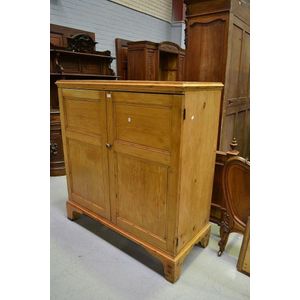French Empire Marble Secrétaire Abattant with Bronze Mounts
Antique French Empire marble topped secretaire abattant, fitted with bronze mounts, green painted paw feet, approx 143 cm high, 98 cm wide
You must be a subscriber, and be logged in to view price and dealer details.
Subscribe Now to view actual auction price for this item
When you subscribe, you have the option of setting the currency in which to display prices to $Au, $US, $NZ or Stg.
This item has been sold, and the description, image and price are for reference purposes only.
- Paw Feet - A paw foot is a base of a furniture leg that resembles the paw of an animal, such as a lion or bear. It is a decorative feature that is often seen in traditional furniture designs, particularly in styles such as Chippendale, Queen Anne, and Georgian. A paw foot typically consists of a carved or moulded ball or disk at the bottom of the leg, which is then carved or shaped to resemble the toes or claws of an animal. The foot may be smooth or textured, depending on the design, and may be finished in a variety of materials, such as wood, metal, or even marble.
Paw feet are often used on heavier pieces of furniture, such as chests, tables, and chairs, to provide additional stability and support. They are also used as a decorative element, adding a touch of elegance and sophistication to the overall design.
"Hairy paw feet" is a term used to describe a variation of the foot design that features a carved or sculpted animal paw, such as a lion or bear, with hair or fur details. The hair or fur details were often carved in a realistic manner and added to the overall decorative effect of the furniture. Hairy paw feet were commonly found on furniture items such as tables, chairs, and cabinets and were popular in the 18th century. - Mounts - Mounts are used to describe bronze, brass and ormolu adornments on furniture especially quality furniture in the rococo and classical revival style, and are also the cabinet makers' name for the metal fittings on furniture, such as hinges, locks and handles, and metal edges and guards which protect furniture from damage.
- Bronze - An alloy of copper and tin, traditionally in the proportions of about 9 parts of copper to 1 part of tin.
The discovery of bronze in Western Asia in the 4th century enabled people to create metal objects which were superior to those previoulsy possible because of its strength and hardness, and it has been used throughout the world for weapons, coins, tools, statuary and other decorative items.
It is very fluid in a molten state, and its hardness, strength when set, and non-corrosive properties makes it most suitable for casting sculpture.
This item has been included into following indexes:
- desks, style or type
Visually similar items

19th century cedar 4 door sideboard fitted with drawers flanked by full columns with Gothic style back, 187 cm long, 56 cm deep 114.5 cm high
Sold by
in
for
You can display prices in $Au, $US, $NZ or Stg.

Antique English pine two door cupboard
Sold by
in
for
You can display prices in $Au, $US, $NZ or Stg.

French walnut mirrored back sideboard, two doors and drawers, carved with pomegranates, approx. 140 cm x 115 cm
Sold by
in
for
You can display prices in $Au, $US, $NZ or Stg.

French 1950's two door sideboard, approx 94 cm high, 145 cm wide, 48 cm deep
Sold by
in
for
You can display prices in $Au, $US, $NZ or Stg.
